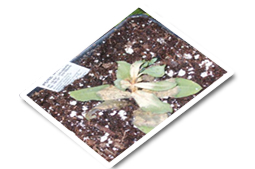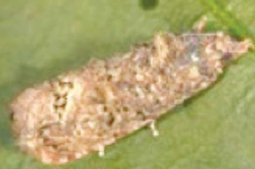Featured Past Articles
“We keep your production running; anytime, anywhere"
 Manuchar is a global trading, logistics and distribution company headquartered in Antwerp, Belgium. It operates in more than 140 locations with enormous investment in more than 50 countries, especially in emerging markets. The company’s trading activities ranges from; chemicals, steel, polymers, spare parts, paper, wood, cement and water soluble fertilizer. Their distribution and local added value logistics unit focuses mainly on commodity chemicals. This line of business has bolstered Manuchar’s presence in Latin America, Africa and Asia; which they are currently topping amongst the leading three distributors in the regions mentioned above.
Manuchar is a global trading, logistics and distribution company headquartered in Antwerp, Belgium. It operates in more than 140 locations with enormous investment in more than 50 countries, especially in emerging markets. The company’s trading activities ranges from; chemicals, steel, polymers, spare parts, paper, wood, cement and water soluble fertilizer. Their distribution and local added value logistics unit focuses mainly on commodity chemicals. This line of business has bolstered Manuchar’s presence in Latin America, Africa and Asia; which they are currently topping amongst the leading three distributors in the regions mentioned above.
Manuchar’s global presence has given the company a leg up in servicing their clients consistently. The networks and partners accumulated by the company over the years in China have been really necessary in production of quality products. This kind of solid foundation gave the company the right capacity to explore and invest in emerging markets and today they boost of being the right partner in emerging markets with 25 years of experience.
 The Export Promotion Council (EPC) held the 1st inaugural Kenya Exporter of the Year Awards (KEYA) on 15th July 2019 at KICC aimed to recognize firms that have made significant contribution to the development of the economy through exemplary business performance.
The Export Promotion Council (EPC) held the 1st inaugural Kenya Exporter of the Year Awards (KEYA) on 15th July 2019 at KICC aimed to recognize firms that have made significant contribution to the development of the economy through exemplary business performance.
Export promotion council recently organized Kenya Exporter of the Year Awards (KEYA) to give props to the best in the export sector. To achieve recognition, participating companies were tasked to meet world class status in different aspects of their businesses. Leadership and corporate governance came top of the list in the assessment guidelines; this was to establish the positioning of participating companies for future growth and sustainability. Marketing and customer focus, financial and revenue generation practices and ICT adoption were among the determinants used for recognition.
Molo River Roses Ltd met the required threshold to emerge among the top by winning two exceptional awards. Spear of the nation award and excellence based award are the two accolades the company claimed. It is noteworthy to say, the flower farm couldn’t have achieved such a milestone were it not for a great deal of synergies created between the farm, their suppliers and the staff.

What is Botrytis:
There are over 50 different pathogenic species of Botrytis. In horticulture, Botrytis cinerea is the most common and has the largest host range. Botrytis cinerea (Botrytis from Ancient Greek meaning “grapes” plus the Neo-Latin suffix –itis for disease) is a necrotrophic fungus that affects many plant species.
Its common names include gray or brown mold, bacterial soft rot, blossom blight, leaf blight, stem canker, crown rot, and damping off or seedling blight. Botrytis is estimated to cause more economic loss in ornamentals than any other disease.
It affects a wide range of plants, including ornamentals, fruits and vegetables. Especially susceptible are wine grapes, strawberries, and flowers with thick succulent petals, such as begonias, peonies and geraniums. It also commonly affects African violets, dahlias, pansies, snapdragons, zinnias, chrysanthemums and many others.
An exhibition provides a platform for different exhibitors to promote their products and services physically. It is an opportunity to meet your customers, collect leads, make relationships and sales. An exhibition provides a resourceful space to network, listen to your customers and learn what the competitors are doing differently than you. However, to get the most out of your investment the following are relevant Dos and Don’ts when exhibiting.
DO………
Find out those exhibiting before booking a stand
Why is this necessary? I’ll tell you why; you don’t want to book a stand out of an emotional decision but a well calculated and detailed analysis, an exhibition demands resources, therefore you need to prioritize value for your money before anything else. Find out who is exhibiting, you might want to know if your competitors already booked a stand or if a major exhibitor pulled out of the event. This information speaks volumes about the value of the exhibition.
Currently, a lot of our growers are scouting. They are also doing physical checks in the greenhouse and pack house and have set up mass traps in and outside the greenhouses.
 Alittle animal causes a big fuss in the ornamental and horticultural industry today. Dutch media reports on how an increase in the discovery of the false codling moth (Thaumatotibia leucotreta) in roses imported from Kenya and Tanzania could form a threat to floricultural trade. But what is going on?
Alittle animal causes a big fuss in the ornamental and horticultural industry today. Dutch media reports on how an increase in the discovery of the false codling moth (Thaumatotibia leucotreta) in roses imported from Kenya and Tanzania could form a threat to floricultural trade. But what is going on?
The fuss is all about the false codling moth. Now today Dutch media report that increasing numbers of the false codling moth could threaten both the rose imports as well as the Dutch horticultural industry.
Two years ago, the false codling moth was classified by Europe as a quarantine pest, recommending its member countries to regulate its presence. And not without a reason. “It is a serious threat, but the risks should not be exaggerated”, says entomologist Gerben Messelink of Wageningen University & Research.
Read more: False Codling Moth is a Serious Threat, But The Risks Should Not Be Exaggerated
 Ask those who work in the floral industry, “why do people buy flowers?” and you will get numerous answers delivered with great confidence. Some of these answers may even be correct. However, we can’t be certain which ones are the real reasons consumers buy flowers. Turns out, asking consumers such a direct question will not reveal the most accurate answers.
Ask those who work in the floral industry, “why do people buy flowers?” and you will get numerous answers delivered with great confidence. Some of these answers may even be correct. However, we can’t be certain which ones are the real reasons consumers buy flowers. Turns out, asking consumers such a direct question will not reveal the most accurate answers.
All consumers have unconscious reasons for just about anything they purchase, especially something as discretionary as flowers. To answer the above question – “why do people buy flowers?” – CalFlowers commissioned a study by a consumer marketing research firm in 2018. The firm, Traction, is an award-winning consumer research and creative marketing firm. One of Traction’s qualifying characteristics for this research was that they had no prior experience with the floral industry, or with any horticulture segment for that matter. It was important to CalFlowers that we had “fresh eyes” looking into this important question. Among other considerations, it meant that their researchers would have to rely on rigorous survey techniques.
 Corteva Agrisciencies opened the third in a series of new offices in Africa, parts of plans to increase sales on the continent within the next few years. The growth plan are based on two-pronged strategy that centres around offering technical support and experience to farmers and other agricultural professionals locally.
Corteva Agrisciencies opened the third in a series of new offices in Africa, parts of plans to increase sales on the continent within the next few years. The growth plan are based on two-pronged strategy that centres around offering technical support and experience to farmers and other agricultural professionals locally.
In Africa there are some professional growers with large operations and state-ofthe art agronomic expertise as well as many small and mid-sized farmers working hard to move beyond subsistence farming.” Said Mr. Anampiu Kithinji, Commercial Director ESCA. “We need to work locally to serve both of these groups with tailored products and agronomic services. That’s why we are building up local sales teams that can offer agronomic support tailored to their markets.”
This will be a change, but Corteva Agriscience is convinced that it is worth the effort. Although Africa has twice the agricultural area as Europe, it is farming 80 million hectares less than its neighbour to the North, according to FAO statistics.


